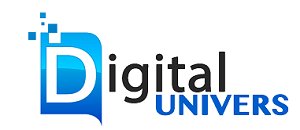Asynchronous Implicit Bias Courses: Benefits and Tips for Success

Implicit bias can significantly hinder building a more equitable and just society. It affects how you perceive and interact with people from different backgrounds, often leading to discrimination and unfair treatment. Fortunately, it can be addressed and overcome through education and training. Asynchronous implicit bias courses in MI provide a flexible and effective way to learn about implicit bias and its impacts while allowing learners to study at their own pace and schedule. In this article, you can explore the benefits of enrolling in this course and gain some tips for success.
Benefits:
Flexibility: Many have busy lives and work schedules that can make it challenging to commit to regular class times. Asynchronous courses allow learners to complete the coursework whenever they have free time, whether during a lunch break, in the evening after work, or on the weekend. This flexibility makes it easier to balance their personal and professional responsibilities with their educational goals.
Accessibility: You require an internet connection and a device to access the course material. It means that you can take the course while traveling without having to commute to a physical location or from the comfort of your own home. It makes education more accessible to learners who may not live near a college or university or who may have mobility issues that make it challenging to attend in-person classes.
Self-Directed Learning: Asynchronous courses also offer a more self-directed learning experience. Learners can study the material at their own pace, pausing and rewinding videos or re-reading text as needed. It can be particularly helpful for those needing more time to absorb and process the material.
Tips for Success:
Set a Schedule: Just because the course is asynchronous doesn’t mean learners should put off completing the work. Set a regular schedule for studying and stick to it. It can help learners stay on track and avoid falling behind. It’s also essential to ensure that the schedule aligns with their personal and professional responsibilities to ensure the coursework is completed on time.
Take Breaks: It can be tempting to power through the material in one sitting, but taking regular breaks can help learners stay focused and retain information better. It is vital to take short breaks every hour or so and use that time to get some fresh air, stretch, or do something else to recharge.
Seek Out Additional Resources: Asynchronous courses often provide a variety of learning materials, but learners should also seek out additional resources if they need more help understanding the material. It could include online articles, books, or even consulting with an expert in the field. Seeking out additional resources can help learners deepen their understanding of the material and develop a more nuanced perspective on implicit bias.
Stay Motivated: These courses require learners to be self-motivated and disciplined. It’s important to remember why you enrolled in the course and what you hope to gain from it. Setting goals and tracking progress can allow you to stay motivated.
Conclusion
Asynchronous implicit bias courses in MI offer numerous benefits to adult and continuing education learners. They provide flexibility, accessibility, and a self-directed learning experience that can appeal to various learners. To be successful in an asynchronous course, learners should set a schedule, take breaks, seek out additional resources, and stay motivated. Addressing them is essential to building a more equitable and just society. They offer an effective way to learn about and overcome implicit bias while allowing learners to balance their personal and professional responsibilities with their educational goals.








